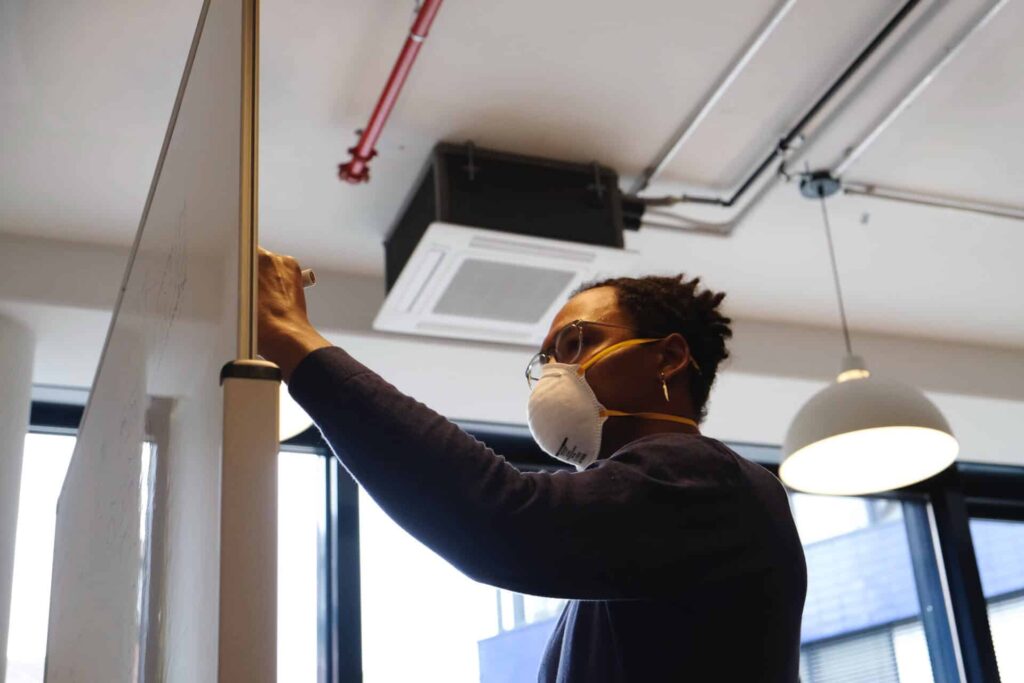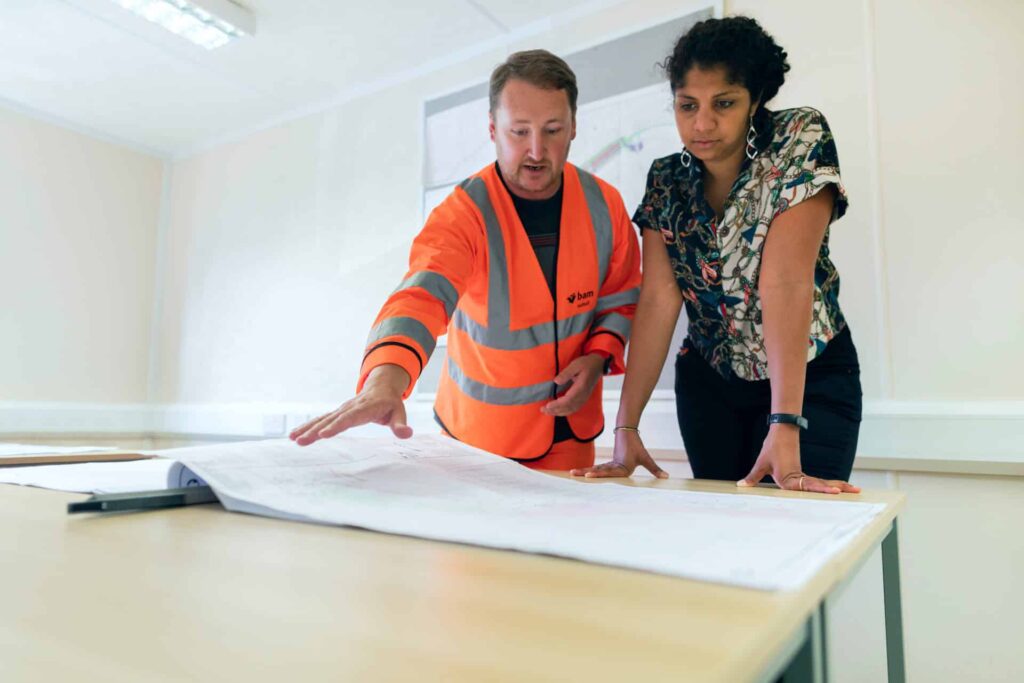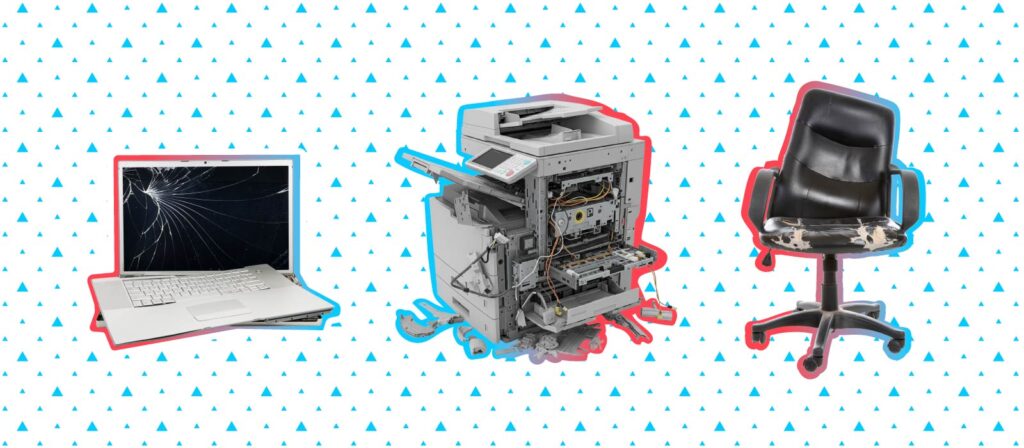The roles and responsibilities of a facilities manager (FM) are evolving, especially now that we’re in a post-pandemic workplace.
The heart of facilities management will always be facilities maintenance and ensuring every employee has the tools they need to thrive. But the role it now plays in an organization has dramatically increased in importance.
In this ‘new normal’ and the incredibly complex and often hybrid world of work, facilities management is now a complicated, proactive, and vital department. And it is critical to the overall success of an organization.
Going forward, we can only expect the roles of facility managers and FM responsibilities to become more technical, strategic, and indispensable.
In this article, we explore both longstanding and new facility management tasks. We also review skills and certifications necessary for anyone interested in entering or excelling in this increasingly key department.

What are the roles and responsibilities of a facilities manager?
Of course the more things change, the more they stay the same. That’s certainly true for the key facilities manager roles and FM responsibilities.
With the Internet of Things (IoT), cyber threats to building automation networks, the move to hybrid work, and new health and safety standards, there’s no doubt how facility management professionals do their work is increasingly complex.
So what is facility management?
At their core, FMs have always been primarily focused on running the daily operations of a company and its building. Their role is historically centered around ensuring workplaces are conducive to growth, and supporting an engaging and positive employee experience. Unlike property and office managers, FMs also play a large role in change management.
The bottom line is everyone from entry-level FMs to experienced facilities managers should be focused on maximizing efficiencies and sustainability. This is, of course, in conjunction with creating a healthy and fulfilling work environment. This was true before and during the pandemic, and will remain so in the years to come.
It’s important to keep these key facilities management duties and FM responsibilities top of mind as we consider the new added complexities that have been accelerated by COVID-19.

Key roles and responsibilities of a facilities manager post-pandemic
There’s no doubt the workplace has changed as a result of COVID-19. It certainly accelerated already existing trends towards hybrid work and more sophisticated CAFM and IWMS.
Since the future of work is hybrid, the future significance and FM responsibilities of facilities management teams have drastically changed, too.
With many people now working from home, hybrid workplace models are the new normal. We can expect hybrid working—a mix of in-office and remote work—to dominate going forward.
By saving money on space and real estate, hybrid work can help a services manager save their organization money on real estate, upkeep, and associated costs. But hybrid work also requires greater facility management skills and better FM software.
Of course, hybrid work can encompass many other work environments, such as activity-based workspaces, agile workspaces, office neighborhoods, and shift work. All of which add their own layers of complexity.
And by most metrics, people have enjoyed working from home since the beginning of the pandemic. So as employees return to the office, FMs will have to ensure their work environment and building services are updated, clean, attractive and enticing, more than ever before.
New responsibilities for facilities managers
The result is that specific facility management tasks have changed as a result of the pandemic, now encompassing new:
- Technologies along with the increased use of existing technologies, such as sensors, desk booking, space planning and space management
- Procedures, including better move management
- Occupancy requirements and regulations that require real-time management of how many people are using a space
- Safety requirements that can be complex through shareable desks and workstations
- Decision-making duties surrounding change management
- Hybrid office spaces that require more planning and management to keep them running smoothly, so as not to negatively impact employee experience
Note that facility managers are now also responsible for ensuring all employees have access to necessary tools as well as the ability to easily communicate. This is no matter where they’re working, even when it’s not at the office—further complicating this position post-pandemic.
New and old FM responsibilities
And these new FM responsibilities need to work side-by-side with their existing duties. A facilities manager job description can typically include: HVAC (heating, ventilation, and air conditioning), building maintenance, grounds maintenance, waste disposal, lighting and security, space management, contract management, procurement, and emergency and contingency planning.
Clearly, the pandemic has greatly increased the pressure on and importance of facility management teams. Thankfully, with more people working from home, FMs have also had more time to develop or streamline procedures, or even plan for a completely new office layout/procedures.
As such, many have already implemented a variety of different technologies and/or software. This includes software like desk booking/hoteling and occupancy tracking, including implementing people-tracking sensors. To do so, they have adopted new CAFM/IWMS, which itself has evolved drastically.
According to OfficeSpace CEO David Cocchiara, “companies that embrace technology to help them prepare for the new dynamic workplace will find they have happier and more engaged employees who feel safe and comfortable in the workplace.”
In short, in addition to their traditional roles and FM responsibilities, facility management professionals will be required to configure new, complex office spaces that are also healthy, safe and enticing to employees.

The necessary new facilities management skills
In many ways, it’s not just the roles and responsibilities of facility managers that have changed. It’s also their significance to their organizations. Whereas facility managers often operated quietly—perhaps even unnoticeably—behind the scenes, now they are at the forefront. FMs are creating and implementing procedures that can impact the very future of an organization.
“The entire landscape of facilities operations and maintenance was changed in an instant,” according to industry veteran Darrell X. Rounds. “I have seen the role of facilities maintenance evolve and move to the forefront … Now we see that many organizations have come to rely on their maintenance teams to provide leadership and guidance on what is necessary to maintain efficiency and safety as it pertains to building preparedness.”
That means that beyond staying at the forefront of evolving technological changes to make buildings and teams more efficient, today’s facility manager needs a host of other problem-solving skills as well.
Specifically, FMs have been thrust into leadership positions within their organizations. They can expect to stay there with hybrid work and the increasing need to attract and retain talent.
All FMs of the future will need to be extremely flexible and adaptable. Exemplary communication and project management skills will also be necessary. Like CEO of Mace Operate, Ross Abbate says of the new challenges of facilities management, “we have to lead with purpose.”
And prepare to see IT, HR and facilities managers moving closer than ever. We’re seeing these three teams working in unison to not only reopen offices, but also change office use in order to create a better employee experience.
Finally, facility management is a constantly evolving space. As such, the best FMs will have a growth mindset and commit to keeping their skillset updated and current, as we’ll cover below.

Facilities manager job descriptions of the future
Yes, facility management is becoming increasingly more challenging post-pandemic. But, with many older FMs now retiring, there has never been more demand for qualified FMs with the right know how. This makes facilities management an exciting and growing field for job seekers. In fact, one report projects the industry will be worth $65.5 billion by 2025.
Facilities management education and certifications
To start in this space, aspiring FMs will need a high school diploma and a bachelor’s degree. The preferable areas of study would be management, engineering, business management, or a similar field.
There are also some higher education institutions that offer degrees directly in facility and property management. This includes Brigham Young University, Temple University, Breda University of Applied Sciences in the Netherlands, and the Portobello Institute of Education in Ireland.
Facility management in the healthcare space requires unique competencies. Those interested in this field can consider a Healthcare Facilities Planning and Design Certificate from Cornell University. This will earn you recognition as a Certified Healthcare Facility Manager (CHFM), a certification recognized by the American Hospital Association (AHA).
Similarly, educational facilities like colleges, schools, and museums have their own unique FM responsibilities. Those interested in this space may want to consider Certified Educational Facilities Professional credentials and other training programs from APPA.
Organizations usually look for certified facility managers (CFM). That’s why all facility managers, new and old, benefit from ongoing training to keep their skillsets updated. As such, they may want to consider online training to earn the ProFM™ credential. The International Facility Management Association (IFMA) also offers network, training, certifications and resources to help you grow your career.
Finally, if you struggle with leadership and communication skills, note that the facilities team at University of Texas at San Antonio reported great success through a Dale Carnegie leadership course.
If you are in the space or looking to enter, it will be helpful to consider extra credentials and ongoing education. This is as well as other tools to help you develop a more well-rounded base of skills.
Facilities managers are stepping into leadership roles
The primary roles and responsibilities of a facilities manager have always been to keep teams happy. Also, to ensure building and workspaces are safe and efficient. And in today’s office, their work is becoming increasingly critical to the overall success of their organizations.
Indeed, facility management tasks today are much more complex, thanks to new ways of working. Thankfully, IWMS has evolved to make facility management streamlined and effective, even in this hybrid, post-pandemic space.
OfficeSpaces offers FMs the best IWMS tools to get ready for the new dynamic workplace. Get in touch to learn more.
Photos: Sora Shimazaki, ThisisEngineering RAEng, airfocus, ThisisEngineering RAEng, Amy Hirschi





